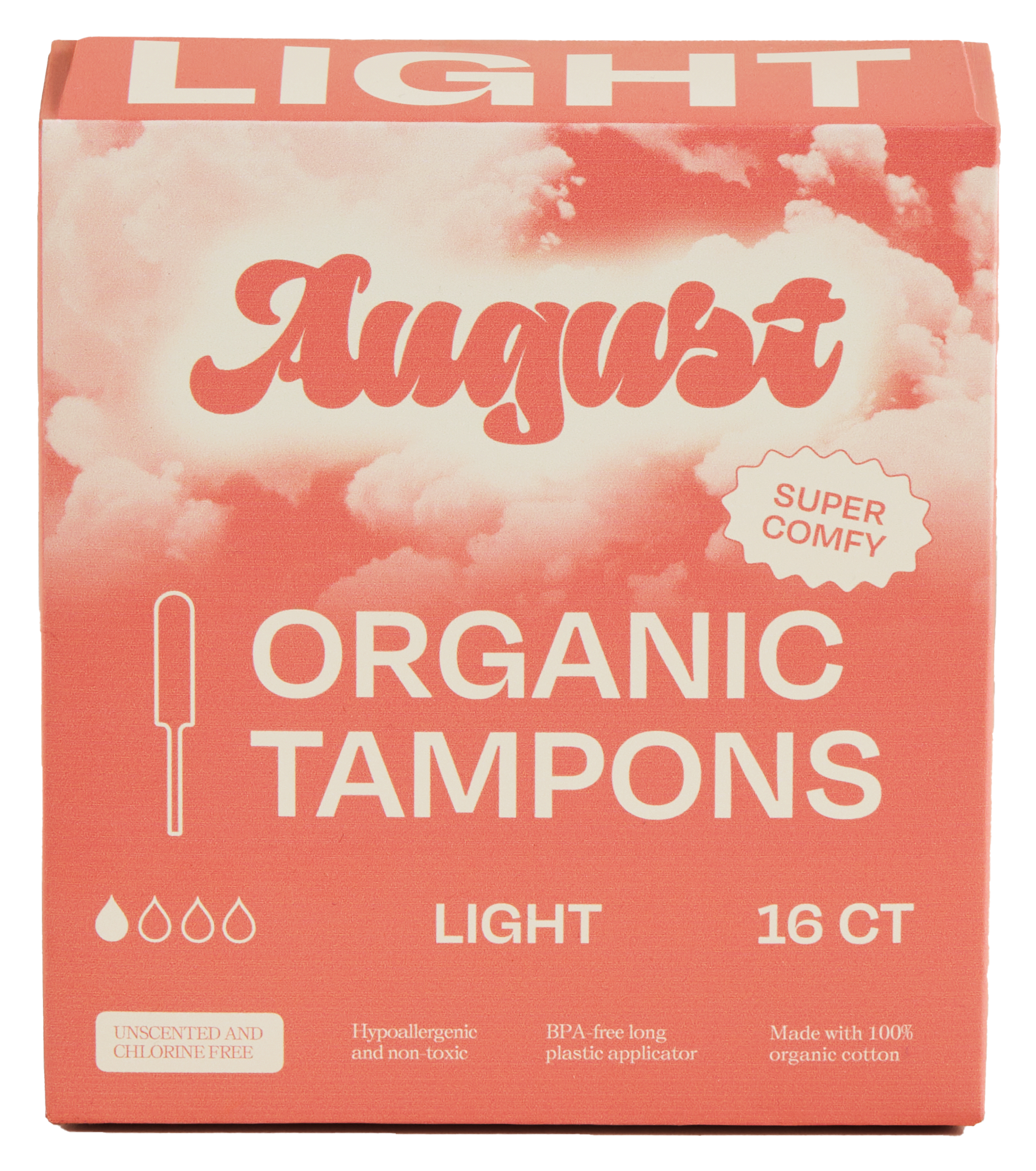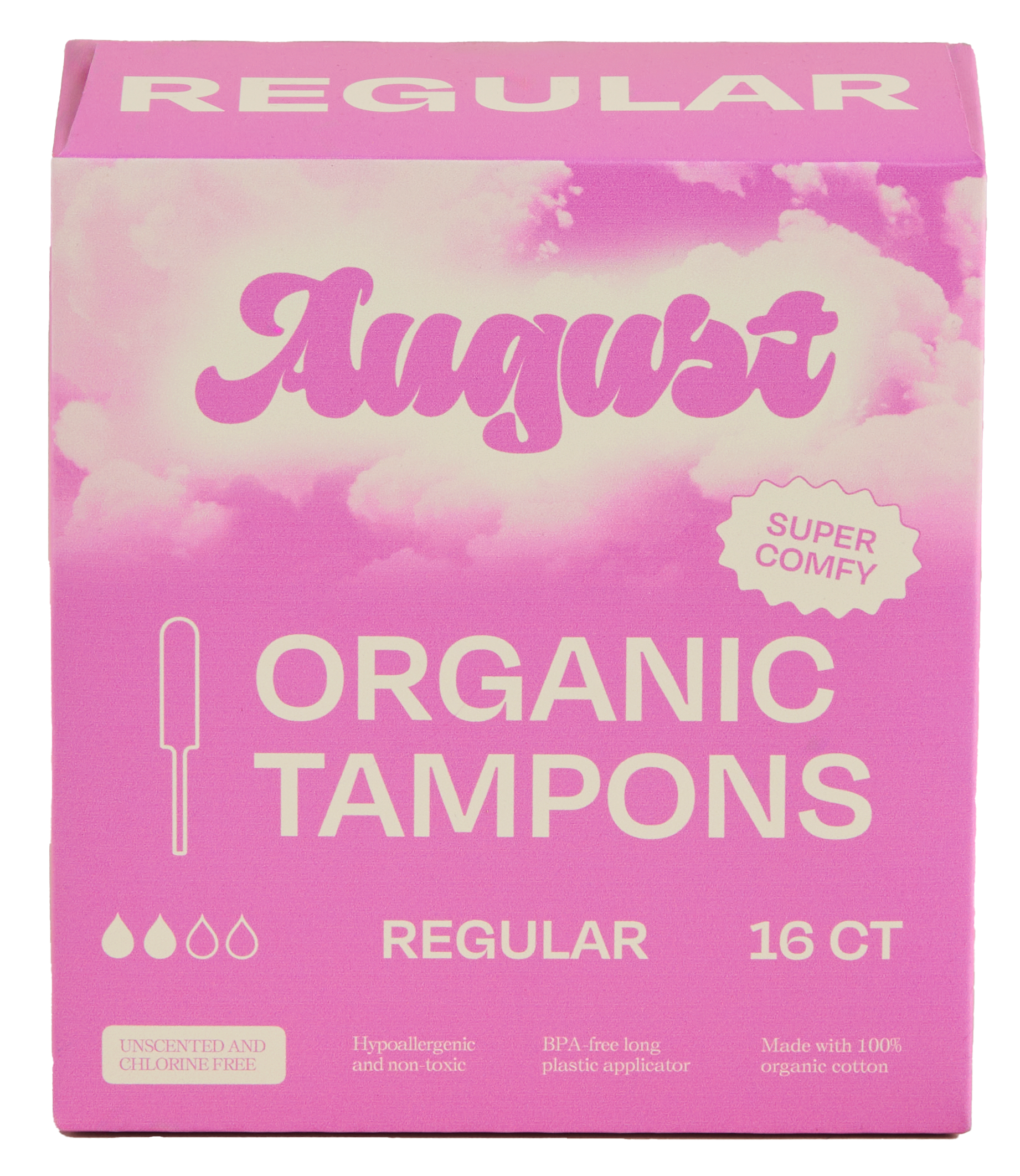4 August Night Pads will now be included in EVERY one of Wisp’s Medical Abortion Kits — at NO additional cost to you.
We’re happy to support the aftercare of your abortion, and Wisp’s mission to provide affordable, comprehensive resources for you in a moment like this❣️
Have questions about…
- the status of abortions in the U.S.
- the difference between surgical vs medicated abortions
- or advice for abortion aftercare?
Keep reading.
There are two broad categories of abortions, according to the CDC
-
Surgical abortions: Suction or Dilation & Evacuation (D&E) – The choice between the 2 depends on how far along the person is in pregnancy. Both are conducted in-clinic and have an effectiveness rate of 99% [Planned Parenthood].
-
Medication abortion is a procedure that happens outside of a clinic, using a combination of 2 pills (Mifepristone & Misoprostol) to block and ultimately terminate a pregnancy.
To contextualize the situation, how many abortions were there in 2022?
As Pew Research Center outlines, the answer is hard to come by since the Guttmacher Institute and the CDC measure and report using different methods.
The last time both reported a yearly national total was in 2020 (which wasn’t a big change from previous years).
The CDC reported 620,327 abortions across the U.S. while Guttmacher reported a national total of 930,160. This only included legally induced abortions conducted by clinics, hospitals, or physicians’ offices.
Pew Research Center provided the following graph to show how those numbers have changed throughout history:

It demonstrates that, “the annual number of U.S. abortions rose for years after Roe v. Wade legalized the procedure in 1973, reaching its highest levels around the late 1980s and early 1990s” [Pew Research Center]. Since then, trends show that abortions have generally decreased at a slow but steady pace.
How many abortion clinics are in the US?
Before Roe v. Wade, there were over 1.6K abortion facilities in the U.S. [Jones, Kirstein & Philbin, 2022]. This number had dropped by more than 1000 since 1982 [Pew Research Center].
What is the status of abortions in the U.S.?
Access to abortions has been banned or at least highly inaccessible in about a third of U.S. states. Many of these laws came into place since the Supreme Court’s decision to overturn Roe V. Wade.
The NY Times is doing a great job tracking updates using a map of all the states and the status of abortion in each. That is, the level of ban or the details on when seeking out an abortion is legal until in each state.
However, there are many states and activists fighting for abortion access and adding legal protections.
The pill is a great way to access an abortion without going to a clinic.
The combination pill abortion regimen was first approved in 2000. Although it wasn’t until 20 years later (in 2020) that we saw medicated abortion become the most common method (53%) for legal abortions in the U.S.
How does the abortion pill work?

Medication abortion is accomplished by taking two types of pills: Mifepristone and Misoprostol.
The original FDA-approved protocol from 2000 suggested different doses of each of the 2 pills, but the present protocol for most patients is: Mifepristone 200 mg (1 tablet) + Misoprostol 800mcg (4 tablets of 200mcg)
(Some patients are recommended to take a second dose of Misoprostol. For example, if they're 9+ weeks.)
Mifepristone is taken first to block a specific hormone that allows a pregnancy to continue developing. Misoprostol is taken second to induce bleeding from the vagina and cramping, which helps the pregnancy pass from your body.
How effective is the abortion pill procedure?
Very effective.
- For people who are 8 weeks pregnant or less, it works about 94-98 out of 100 times.
- For people who are 8-9 weeks pregnant, it works about 94-96 out of 100 times.
- For people who are 9-10 weeks pregnant, it works about 91-93 out of 100 times. If you're given an extra dose of medicine, it works about 99 out of 100 times.
The effectiveness depends on how far along you are in your pregnancy when you take the medicine. [Planned Parenthood]
Is the abortion pill safe?

Rest assured that abortion, no matter which type you choose to have, has an extremely low risk of complications (less than 0.4% for medication abortions, and less than 1% for surgical abortions).
Simply put, abortion is one of the safest modern procedures there is.
Is Plan B the same as an abortion pill?
No. Plan B is a form of emergency contraceptive pills that prevent the egg from being fertilized so you do not become pregnant. Plan B pills do not terminate a pregnancy like a medicated abortion.
What is the aftercare of using an abortion pill?
For a detailed answer, check out Wisp’s Treatment Guide!
Within the first 24 hours:
- nausea, diarrhea, and a mild fever are common symptoms but if it persists longer than 1 day, that could mean an adverse reaction or infection
Beyond 24 hours, the main side effects to look out for are:
- fever over 100.4
- any heavy bleeding that soaks through 2 maxi pads 2 hours in a row
- clots larger than a lemon
- any intense pain that can't be eased with pain relievers or a heating pad
- or pain that's located in the neck/shoulder region or on one side of the abdomen
Out of caution
- avoid tampons or inserting anything into the vagina for about 5 days post-abortion (since the cervix is softened during treatment and we don't want to increase the risk for infection)
- pads are fine (and encouraged!)
- If having sex after your abortion, make sure to use contraception because it's very possible to get pregnant again quickly. If you're starting birth control, use a backup barrier method for the first week just to be safe.
Symptoms of pregnancy, including cramping and bleeding should subside slowly after the abortion is complete. Some patients experience cramping and bleeding or spotting for 3-4 weeks after the abortion, which should be manageable with pain relievers like ibuprofen.
Many individuals feel back to normal following treatment, but for others, it may take a day or two. As soon as you feel physically and emotionally rested, it is ok to resume your normal daily activities.
Why is heavy menstrual bleeding after an abortion common?

Menstrual bleeding tends to be heavier because you're passing tissue over a period of time, including the gestational sac. However, this can vary from person to person depending on how far along in the pregnancy they are.
Is there a way to stop the bleeding – or do you just have to go with the flow (literally).
Some level of bleeding and cramping are expected for about 3-4 weeks after taking the misoprostol pill.
As recommended above, use pads, particularly during the first week for better comfort and to avoid the risk of infection from inserting a tampon.
The bleeding may start and stop, and also range in flow. You’d want to check in with a healthcare provider if the blood soaks through two maxi pads per hour for two consecutive hours.
What is the benefit of abortion pills > the surgical procedure?

The primary benefit of choosing a telemedicine (medicated abortion) option is privacy.
No appointments or visits to a clinic means that you can complete your abortion comfortably and discreetly from your own home.
Also, telemedicine helps to reduce the demand on clinics who can then use their resources to support any patients who, ultimately, aren’t a good fit for medication abortion at home.
How much does an abortion typically cost?
Kathleen Morrison (she/her), Brand Writer at Wisp reminds us that cost is a major factor when thinking about reproductive care options.
“Abortion costs vary widely, depending on the type of abortion you need (or have access to), the state where you are receiving it, whether or not you have insurance, and the ever-changing laws that govern abortion.”
Here’s the breakdown:
-
Medication Abortion — a.k.a. the abortion pill. The average cost is $535, but can range from $75-$1,633 or higher.
-
Aspiration Abortion — a.k.a. suction abortion, Manual Vacuum Aspiration, or MVA. The average range is $435 to $955; the mean cost to perform it 10 weeks into pregnancy is $508.
-
D&E Abortion — a.k.a. Dilation and Evacuation procedure. The cost of this procedure ranges from $500-$3000 or more, depending on how far along the pregnancy has progressed.
-
Late Abortion (occurring after 16-24 weeks) — Cost ranges from $8,000 - $15,000 because the procedure happens over the course of several days and involves multiple steps. This type of abortion is extremely rare and difficult to access due to restrictive state laws.
Those are just the procedure costs, not including: provider visits, transportation, lodging, child care, lost wages, extra medication, and follow-up care. Not to mention that some of these costs might be even more if they need to travel to a different state to complete the abortion.
Along with 24/7 care, Wisp is able to provide their abortion kit for $200 — about $335 cheaper than the average medication abortion. Without the costs of having to maintain a brick-and-mortar office, telemedicine can provide medication abortions at a lower cost.
Wisp also provides financial assistance through the Abortion Freedom Fund; patients who qualify can get up to $150 covered.
What is the quickest option for getting an abortion?
If eligible, it may be a faster option to order a pill via telemedicine, rather than wait to see a provider in-person.
Even in states where abortion remains legal and accessible, the closing of clinics across the country has led to an increase in out-of-state patients seeking care. Many clinics are experiencing longer wait times for appointments for this reason.
Any wrap up advice for people seeking an abortion or recovering from taking the pill?

Abortion procedures are subject to varying laws and regulations, regardless of which type you choose.
Each method is a safe and effective option that your doctor can provide guidance on. Most importantly, it is important to discuss which method is the right fit for your particular case, and based on your full medical history.
Think a Medical Abortion Kit is the right option for you?

Wisp’s Medical Abortion Kits come with 24/7 support as well as 4 August Night Pads to see you through your aftercare.




























